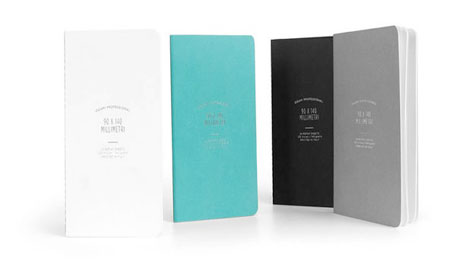 We all respect the lengths that mills go to on our behalf to keep paper production sustainable, but others are looking to stone when it comes to sourcing paper. The latest “stone paper” products to hit store shelves are notebooks marketed by Italy’s Ogami, consisting of paper made by Repap – that’s “paper” backwards, don’t ya know.
We all respect the lengths that mills go to on our behalf to keep paper production sustainable, but others are looking to stone when it comes to sourcing paper. The latest “stone paper” products to hit store shelves are notebooks marketed by Italy’s Ogami, consisting of paper made by Repap – that’s “paper” backwards, don’t ya know.
In the last few years, stone-based paper (let’s just call it “staper,” shall we?) has been put forward by various companies as an environmentally sounder alternative. There is, of course, far more rock lying about the planet than trees. Staper’s main ingredient is the plentiful calcium carbonate. (The element has been used for 30 years as a filter and coating pigment to make brighter, whiter, glossier paper, as Wired points out in a recent, well-researched article.) And truth be told, staper provides some features that remain elusive for traditional paper: it’s waterproof and tear resistant for a start. Its makers are also quick to mention that it doesn’t use water, chlorine, acids or petroleum in its manufacturing process.
 Yet, the Wired piece also reveals that staper is made by blending calcium carbonate with high-density polyethylene (HDPE), a plastic derived from catalyzed natural gas products. So much for that eco-cred. Ironically, it’s this plastic that gives staper its paper-like ability to fold. While it can be recycled – it’s classified as a Type 2 plastic – it’s far more likely to end up in the paper recycle bin, gumming up the works. It’s also thought to photodegrade in 14 to 18 months, but only if left in direct light all that time. Which, of course, also means that anything you create with it better be kept well away from windows.
Yet, the Wired piece also reveals that staper is made by blending calcium carbonate with high-density polyethylene (HDPE), a plastic derived from catalyzed natural gas products. So much for that eco-cred. Ironically, it’s this plastic that gives staper its paper-like ability to fold. While it can be recycled – it’s classified as a Type 2 plastic – it’s far more likely to end up in the paper recycle bin, gumming up the works. It’s also thought to photodegrade in 14 to 18 months, but only if left in direct light all that time. Which, of course, also means that anything you create with it better be kept well away from windows.











